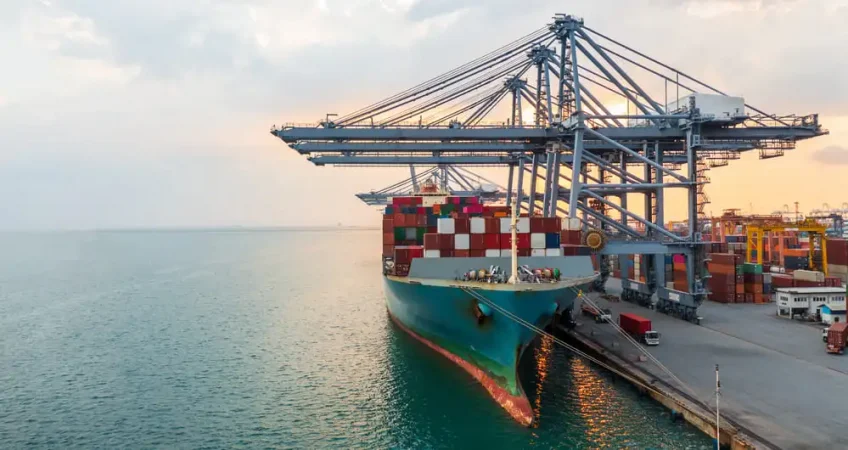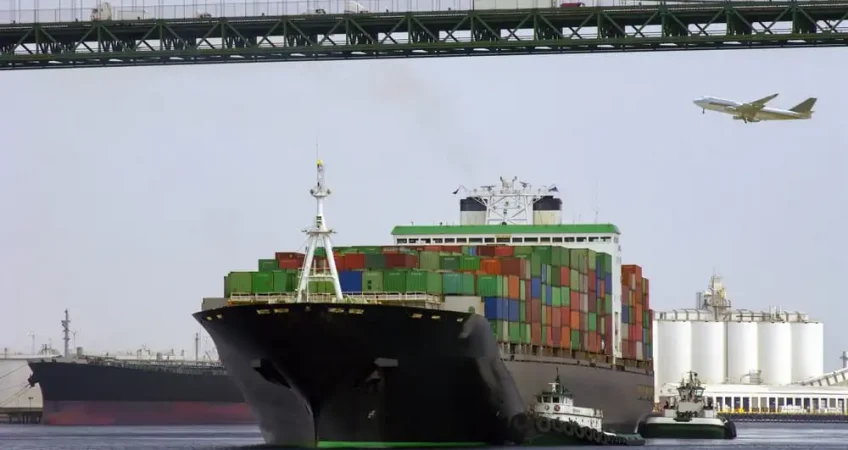Have you ever wondered how your new sofa traveled from another continent, or how tons of raw materials cross vast oceans? Or maybe you’ve pondered the journey of those peculiar gadgets from the other side of the world to your doorstep.
Shipping routes are the invisible giants that power global trade. They bring everything from the clothes you wear to the tech you use right to your doorstep. Behind every ship that sails the seas is a complex logistical operation working tirelessly.
The shipping industry is the backbone of global trade, projected to account for over 60% of global trade value by 2028. Between 1990 and 2021, cargo volume doubled, while fleet capacity grew by 43%, highlighting its crucial role in the world economy.
At Double Ace Cargo we take this task with diligence and great care, that’s why we have designed a complete and optimized ocean freight logistics system to get you where you need to go efficiently. Below, we tell you everything you need to know about ocean freight.
What is ocean freight?
In simple terms, it involves transporting goods by massive ships specifically designed to move heavy and bulky cargo over long distances on the open sea. This mode of transportation not only connects global markets but also allows companies to expand and elevate their products to new levels.
Main types of ocean freight services
The ocean freight industry offers a wide variety of services tailored to different logistic needs:
- Less-than-Container Load (LCL).
LCL refers to the dispatch of goods that do not occupy an entire container, exchanging space with other shippers. This alternative is more affordable for small companies, since it makes it possible to spread transportation costs. An artisan exporting his goods could choose LCL to ship his products abroad without having to face high costs.
- Full Container Load (FCL)
This service allows a single shipper to use all the space in a container, optimizing its capacity. It is perfect for large quantities of products, offering greater control and minimizing the danger of tampering and damage. For example, a furniture company that needs to make a large purchase or sale of sofas could benefit from an FCL.
- Break Bulk
For products that cannot be stored in a standard container, the break bulk service enables the delivery of large or irregularly shaped individual parts. This procedure is applied, for example, for building machinery that needs to be moved completely and safely.
- Roll-On/Roll-Off (Ro-Ro)
This service is mainly used for large vehicles and machinery. Products are loaded and unloaded directly onto specialized vessels, which facilitates the procedure and reduces the possibility of damage. For example, automobile manufacturers can ship their vehicles to global markets without having to disassemble and load the components.
The logistics behind ocean freight
Ocean freight involves multiple phases and key players, such as freight forwarders, who organize the collection, preparation, and delivery of goods, ensuring an efficient process. An essential aspect is Incoterms, which define responsibilities at each stage of the shipment.
Among the most common are: EXW (Ex Works), where the buyer manages the pickup and transfer from the seller’s premises; CPT (Carriage Paid To), where the seller covers transportation to an agreed point; and FOB (Free On Board), where the seller packs and loads, and the buyer assumes responsibilities once the product is on the ship.
Stages of maritime transport
Ocean freight is a complex process that ensures the smooth movement of goods across the globe. It begins with the transfer of goods from the trader’s warehouse to the forwarder’s facility, where they undergo export customs clearance. The cargo is then carefully inspected, packaged, and prepared for its sea voyage, which can last anywhere from 20 to 60 days depending on the destination.
Once the cargo reaches the destination port, it goes through import customs clearance. The containers are then moved to the forwarder’s warehouse for classification and, finally, transported by land to their final destination. Freight forwarders act as logistics partners, managing or coordinating each step of the process to optimize costs and ensure efficient delivery.
Advantages of ocean freight
Ocean freight offers a cost-effective solution for shipping high-volume cargo. Real-time tracking technologies provide customers with peace of mind, allowing them to monitor their shipment’s location and status throughout its journey.
Shipping costs vary based on factors like volume, distance, and the type of goods. It’s best to consult with a logistics provider for an accurate quote. While sea freight is more affordable than air freight, it typically takes longer, with transit times ranging from 2 to 6 weeks depending on the route and customs procedures. The optimal shipping method will depend on the specific product and budget constraints.
Double Ace Cargo: we boost your business wherever you go
At Double Ace Cargo we are ready to help you manage your international shipments efficiently and safely. Our business approach focuses on delivering your products to international destinations in perfect condition, enabling your company or venture to grow globally. To learn more about our services and the benefits of ocean delivery logistics, continue reading our blog.


